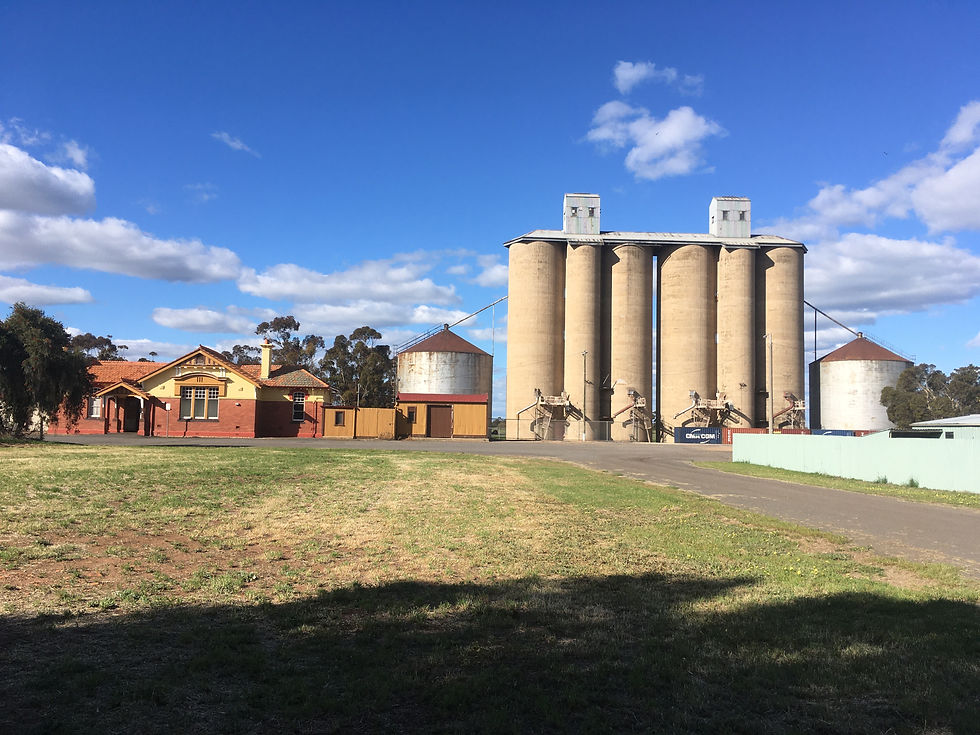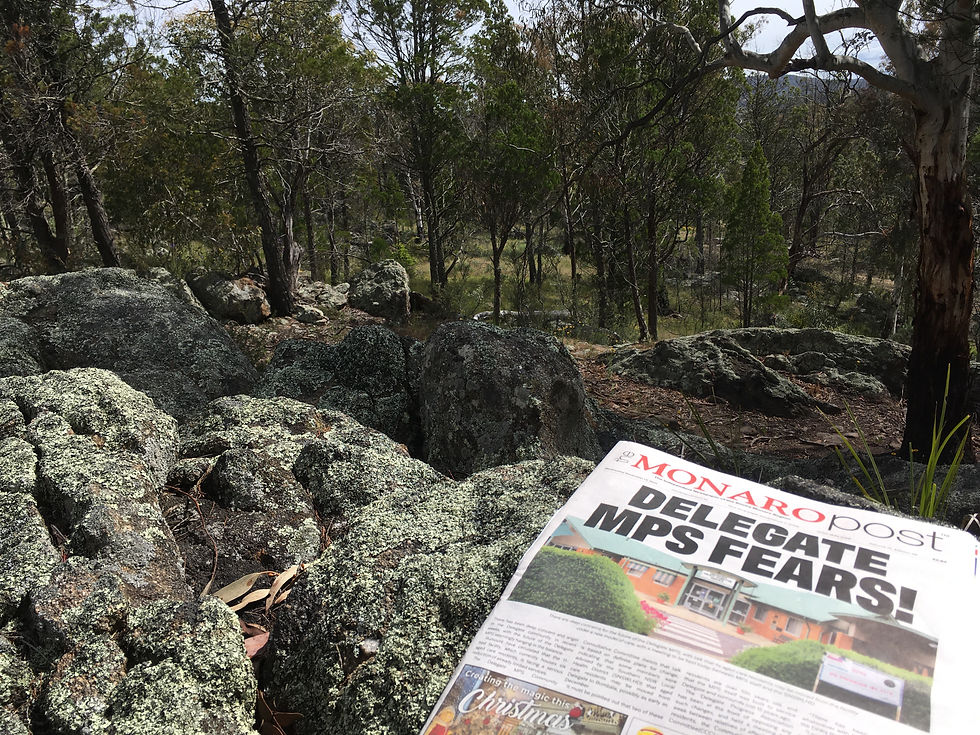The 91-year-old editor
- alisonmcadam
- Oct 12, 2021
- 4 min read
Updated: Jan 8
Today I interviewed the 91-year-old editor of The Buloke Times. Yes, you read that right, 91! His name is Robin Letts and he’s been the editor of the paper since 1987 when the previous editor died – that editor was his father Godfrey ‘Goff’ Letts and he’d been editing the paper since 1921. Yes, that’s a 66-year stint as editor. Together, Robin and Goff have edited this newspaper in country Victoria for more than 100 years. That’s got to be a father-and-son record not matched anywhere else in the world, surely.

I’ll be looking into this family dynasty, which is set to continue for some years yet as Robin’s son David is a co-owner and runs the paper’s press now, in the coming months but right now I’m keen to note down the experience of interviewing Robin, and my observations of the town he lives in.
The Buloke Times is based in the town of Donald in northwest Victoria, half way between Melbourne and Mildura – each is three hours away. The Richmond River runs around the town and it’s flanked by bulokes, a tree that produces one of the toughest timbers in the world and houses sing-song kookaburras. It’s peaceful and green in this spring October. There’s flat but productive farming land all around with cropping seemingly the main venture if the giant silos on the edge of town are anything to go by.

The main street has plenty of old buildings but also a spattering of newer ones and I can’t say that this is a thriving or bustling hub. By all accounts there seems to be plenty of go getters keeping things going – lots of active sporting clubs (bowls, cricket, footy, angling, hockey), a busy local business owner who has a menswear shop in the main street that pumps out music all day, and some large businesses such as the family-tied Michaels vehicle dealership and JVC machinery enterprise. But there are also vacant shop fronts. It’s hard to tell if the few pubs that are here are open or not and it’s hard to tell if things are closed temporarily due to covid or if they haven’t really been operating for some time before that.

There are no signs that this town has been spotted by the hipster crowd or gentrified in any way. There’s a good café and a top bakery but the staff don’t wear leather aprons, they just serve tasty, well-priced food. The roads off the main street are lined with houses that haven’t been renovated. Some are well kept and neat, some are unloved and sparse but there’s no indication a makeover boom is happening here – I don’t hear a single drill or drop saw, nail gun or tradie’s radio blaring. I don’t see a single new home being built.
But maybe that’s about to change. One of the co-owners of the Buloke Times that I interviewed today, Shane O’Shea, said houses were being snapped up lately, only staying on the market about a week before being sold. And I do see ‘Sold’ signs on a few during my walks. If Donald is about to experience part of a regional migration shift post covid, it appears to me that that would be the first time in a long time that this town has experienced a wave of growth. What I see mainly is a town that is steady and consistent, there’s some businesses doing well, others aren’t, and there’s some houses that look like the occupants are doing well, others clearly aren’t. It may well have looked the same 10 years ago, and 20 years ago, maybe even 30 years ago. Some ins, some outs, no big change.
And there’s nothing wrong with that. It’s refreshing. This isn’t a small town on its knees (it has multiple schools, which helps I think), but it’s not the latest tree-change mecca either. It’s just ticking along, and so is its newspaper.
Robin has been turning up for work every day since he was 17. Today he was subbing some copy in red pen on a printed-out page being worked up for Friday’s edition. He didn’t have a lot of time to talk to me because he had a lot to get done. His memory for the past is sharp and he virtually jogged out of his office at one stage to get a copy of the paper to talk about.
David was at work on the press down a corridor and Shane was in ‘the computer room’ next door. In another part of the building is a museum’s worth of printing machinery – cabinets full of draws that are each full of lettering, some hand-carved wood, some metal, all sizes, different fonts, upper and lower case, everything. In this setting, it just didn’t seem right to get my laptop out and smart phone and tripod and work meticulously through my planned questions. It is more appropriate to just plonk down next to Robin and have a chat, with the smallest of digital recorders running to preserve the conversation.

He can’t come out for lunch after our interview as his wife Shirley, who still does the wrapping of any hardcopy editions that need to be mailed to subscribers, had ordered three pasties for lunch, for them and David – a weekly tradition by the sound of it. But he rings me later to ‘better’ answer a question I had asked about the paper merging with the nearby Birchip masthead some years ago. He might not have had the time, or thought that he had much to add to a discussion about local news, but my hunch that a 91-year-old editor, whose grandfather had started the paper in 1875, would have some valuable knowledge on the subject proved right.
More on that later, and this is only the first field trip of five I’ll be doing as part of my PhD exploring the sustainability of Australia’s local news providers. More places to go, more people to meet, more knowledge to gain …



Comments